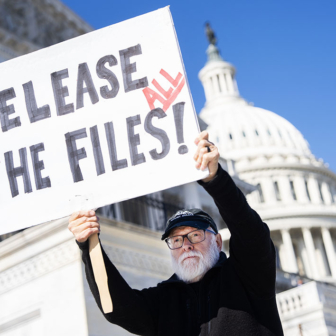In 1652 a Swiss washerwoman, Michée Chauderon, was arrested after the Devil visited her in the form of a shadow and, during intercourse, left a small mark under her breast and another on her thigh. Prosecutors determined that if these marks produced no blood after being pierced with a needle this would be proof she had relinquished God. Chauderon winced in pain when they pricked her chest, and blood did flow. It looked as though she might be innocent. The court ordered further interrogations, and when the mark on the thigh produced no blood, she was tortured, until finally she told the truth – yes, she had let the shadow defile her, and she had made a pact with the Devil in exchange for promises of wealth. She was burnt at the stake in Geneva.
Australians don’t think about the death penalty very often. That’s not so surprising: the last person hanged here was Ronald Ryan, back in 1967. For most of us, capital punishment belongs to a different time, a time of archaic beliefs and superstitions, when justice was corporeal and pain could purify the transgressor. Breaking on the wheel, impalement, boiling in oil, slow slicing, burning at the stake, flaying alive, and hanging, drawing and quartering – all are unimaginable acts of torture and killing we associate with the Middle Ages, yet they persisted in post-Enlightenment Europe, especially in the colonies. Even the United States used the breaking wheel during the period when slavery was legal.
Capital punishment sits uneasily with the values of the modern state, whose aim is to maximise the potential of every individual for the benefit of the state as a whole (hence public health, compulsory education, institutions to support markets, reformist justice, and so on). In this era, new designs and technologies – guillotines, electric chairs, gas chambers and lethal injections – were used to make killing more efficient and, proponents argued, less cruel.
When Australians are reminded of the death penalty now, and in a way that occupies the thoughts of a good chunk of the nation, it’s usually because an Australian citizen has been sentenced to death for breaking the laws of a country that still uses capital punishment in its justice system. The most recent victim was twenty-five-year-old Van Tuong Nguyen, hanged in Changi Prison, Singapore, on 2 December 2005.
The coverage of the plight of Andrew Chan and Myuran Sukumaran in Indonesia has reminded us again about a feature of some legal systems that we don’t usually have to think about. We tend to feel that this kind of punishment will eventually melt away, as it has in Australia. But at times like this, when we stop to think deeply about people facing death at the hands of the state – when we think about Chan and Sukumaran lined up on that island – progress doesn’t seem fast enough.
The death penalty will disappear. And, if you take a historical view, it’s happening fast. Enlightenment thinkers argued for reform of the judicial and penal system based on reason, articulating the basis of secular, inviolate rights, and among them one of the most influential was the early Milanese criminologist Cesare Beccaria. In 1764 he published his treatise On Crimes and Punishments, which was reprinted frequently and translated into many languages. Beccaria argued that punishment should be proportional to the crime, and that no state had the authority to torture or take another person’s life. His ideas shaped reforms throughout Europe and in the United States.
Twenty years after the book’s publication, the Grand Duchy of Tuscany abolished the death penalty. In 1826, Swiss philanthropist Jean-Jacques de Sellon held an international competition for an essay on the subject of abolition. Only a century and a half before, his country had been burning witches. In the United States, the state of Michigan abolished the death penalty in 1847, and Wisconsin followed in 1853. Venezuela, Greece and Portugal soon followed, and by the late 1800s there are too many others to list here.
Australia had its own abolitionists – people like David McLaren, a Scottish-born banker who managed the South Australian Co. in Adelaide. On a Thursday evening in mid December 1840, McLaren gave a lecture, “On the Abolition of Capital Punishments,” at the Literary and Scientific Association and Mechanics’ Institute in Adelaide. Only forty years earlier, he reminded his audience, capital crimes had included sheep stealing, theft from a shop of goods worth more than five shillings, and theft from a person’s pocket above the value of one shilling. “Long-continued and laborious efforts” saw the penalty in these cases purged from the criminal code, McLaren told his audience. The public now “revolts against the judicial deprivation of life,” he added, except in cases of murder, “a mighty improvement effected in the course of a generation.”
Even at that time, much of the public had come to realise that “long and lamentable experience” had shown that the death penalty was “altogether ineffectual” as a deterrent. All it accomplished, he said, was to diminish the sanctity of life and risk brutalising members of the public, continuing a cycle of violence. McLaren ended his lecture by circulating a petition on the subject addressed to Queen Victoria.
The move towards a global acceptance of abolition began, of course, with the formation of the United Nations in 1945 and its commitment to defining and safeguarding human rights. Smaller nations that had already stopped using capital punishment took the lead in pushing for reform. In 1957, the United Nations’ Third Committee (the one responsible for human rights) began debating Article 6 of the Draft Covenant on Civil and Political Rights (the one about the right to life), with the United Kingdom, the United States and Russia arguing over wording that would still allow a state to use capital punishment in some circumstances.
The Uruguayan delegation, with the support of the Columbians, proposed an amendment to prohibit the taking of life under any circumstances. The delegation’s spokesperson, Adolfo Tejera, pointed out the irony of a UN committee defining cases in which it would be acceptable for a state to take the life of another human being. Drop the article altogether, they argued, and replace it with something simpler – nothing can justify the death penalty. The big powers defeated the amendment, but it was the beginning of a continuing effort to have the death penalty banned in international law, an endeavour that has attracted increasing support among member nations over the years. The most recent efforts have been led by Italy and New Zealand. The majority of the world’s countries have abolished or abandoned use of capital punishment, and the United Nations continues to work towards the goal of worldwide abolition.
I’m no expert on the death penalty, but I’ve been appalled and horrified by the idea of it since I was a little kid, allowed to watch movies I’d never let my own kids see. To my young mind, governments were at the peak of a long line of authorities that started with parents and school teachers. They possess all the power, and they have the monopoly on violence, but they are also supposed to be the most responsible, to lead by example, to protect and care, to be better than our individual fears and failings and emotional extremes, to represent the best in humanity, to serve as the epitome of our collective ideals. Orchestrated, deliberate group violence shocked me.
Over the last 300 or so years, abolitionists have often described capital punishment as an anachronism, as if, in the march of progress, the abandonment of the death penalty will be a given. It doesn’t work that way. The United States and Japan are advanced democracies, powerful global leaders, yet both countries retain the death penalty. Some states have abolished it only to reinstate it later. ISIS militants have set up a tribunal system to deal with everything from petty civil disputes to crimes they deem to be the most serious, such as murder, rape and being an enemy of their “state.” Capital punishment is part of their tribunal system, and they have resurrected the spectacle and theatre of the death penalty, broadening the idea of a public execution to a global audience.
World leaders have denounced ISIS’s gruesome acts, as they should. But we shouldn’t get to choose which sorts of orchestrated public or group-sanctioned violence are acceptable. Burning someone alive in a cage is likely to be more painful for the victim than shooting him or her in the chest, but both are wrong. There are better options for dealing with crime in leading democracies such as the United States, Japan and Indonesia.
The death penalty isn’t going to disappear all on its own as we become more “civilised.” Where it has been abolished it’s been the result of determined political struggle. Those who oppose capital punishment, overall, are succeeding in their cause.
If anything positive were to come out of the bleak events unfolding in Indonesia, it would be a renewed interest among politicians, diplomats and the public in working with other abolitionist countries to put an end to capital punishment. These processes will seem slow to us, but they will grind on, and things will change.
In his book Bury the Chains, historian Adam Hochschild reminds us how a small group of people challenged slavery in the late 1700s. They saw it as an urgent problem and felt it was taking far too long to make any difference, yet less than a century elapsed between their first organised protests and the formal act of abolition, a remarkably rapid transformation.
European Australia started off as a military outpost with floggings, hangings, and massacres of Aboriginal people. My parent’s generation was alive at the time of Australia’s last execution. That kind of act is so far from our minds that we don’t think about it, and when we’re reminded it still occurs, most of us are dismayed.
You might be surprised to learn that it wasn’t until 2010 that the federal government prohibited the death penalty in all states and territories, making it extremely unlikely any of them could reintroduce it. From this perspective, we’re really just at the beginning of the abolitionist struggle. The end of the death penalty is inevitable because the abolitionists have the resolve and the momentum, but we need to keep up the pressure. •




